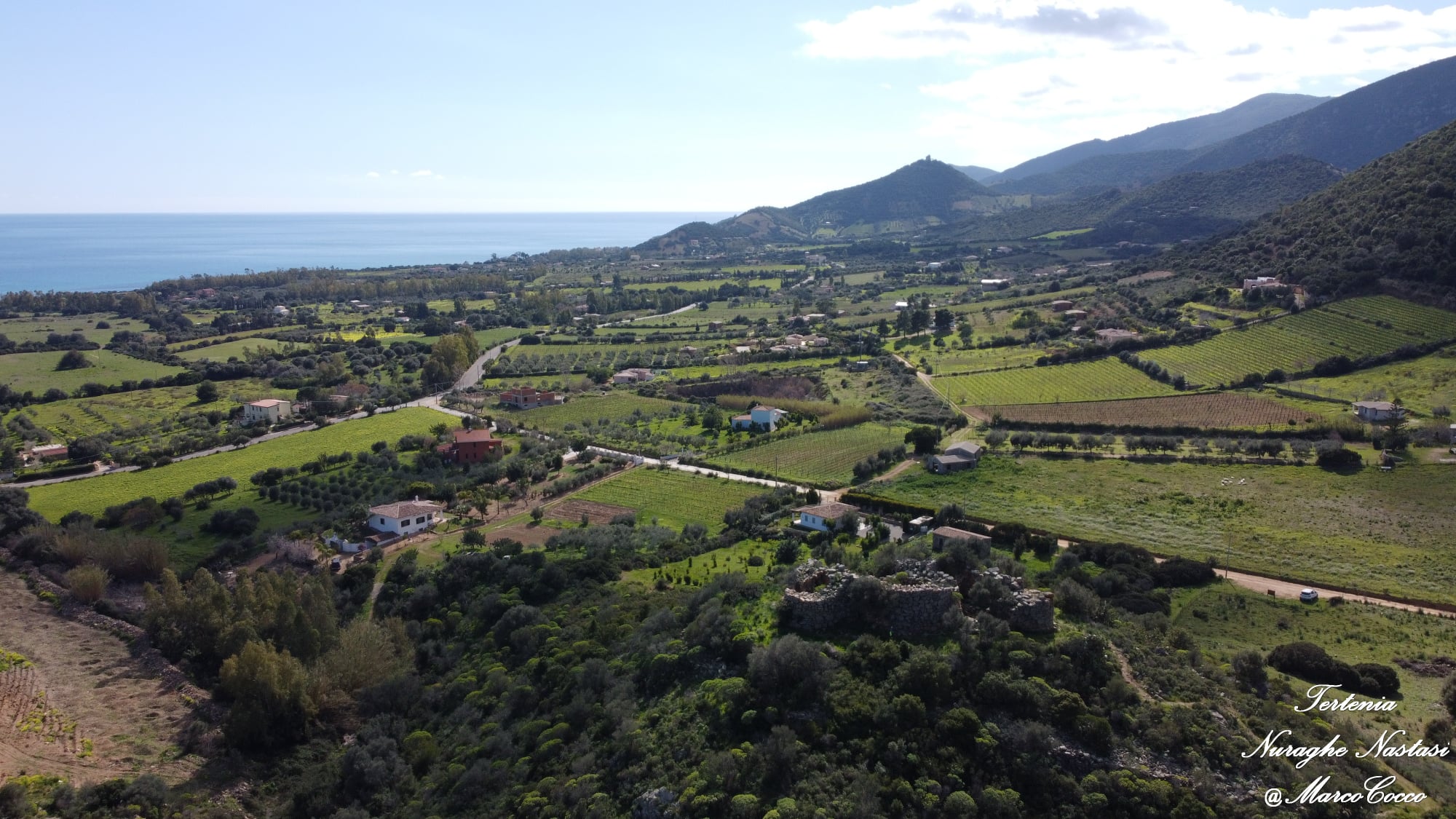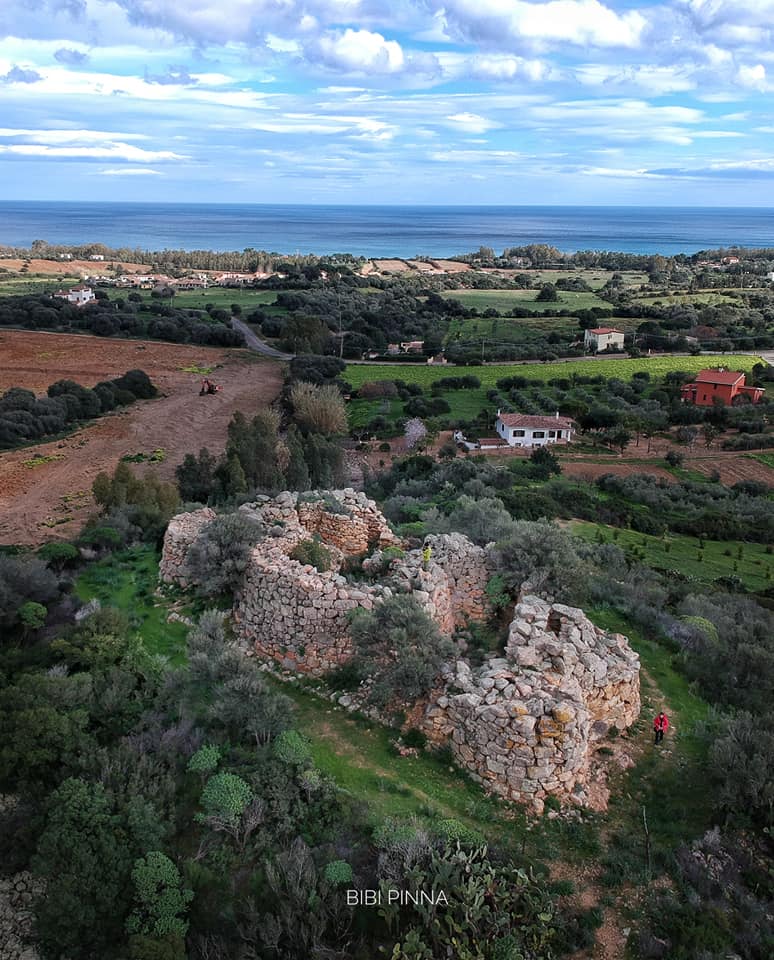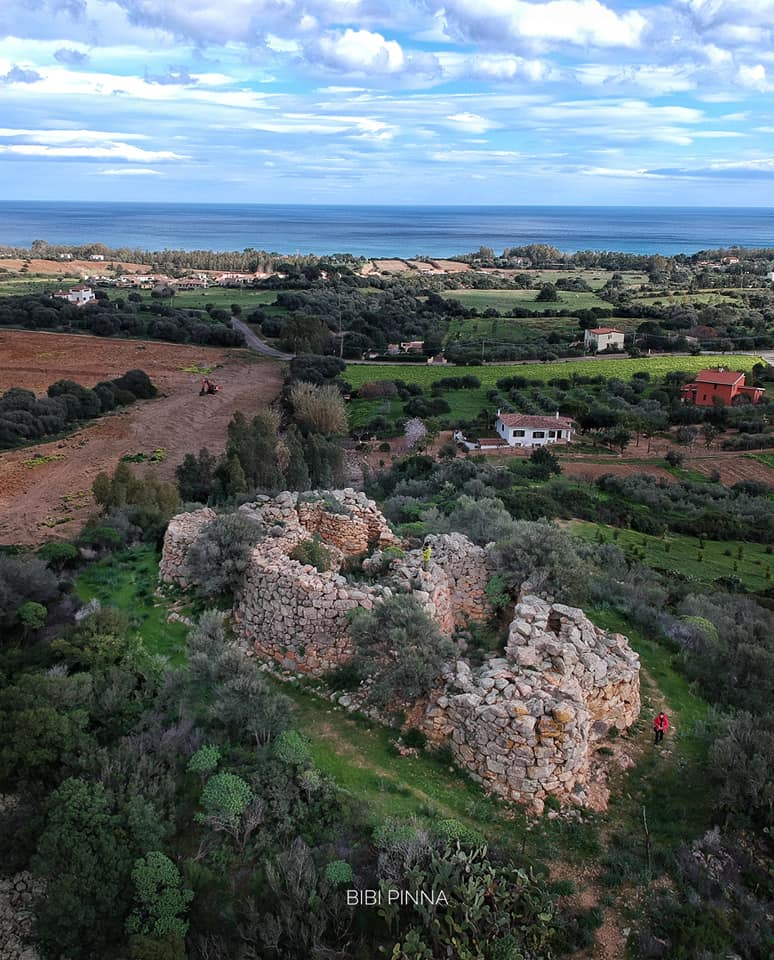97.2 and 97a.2: The “Nastasi” or “Anastasi” of Tertenia is a nuraghe of considerable size, in which a keep, four secondary towers, and two courtyards can still be clearly distinguished. There are two entrances to the complex, and the stairs leading to what was the upper part are still visible. Unfortunately, the monument is not in very good condition, despite recent work that has freed it from the vegetation that almost completely enveloped it. The wall stratigraphy allows for the distinction of various construction phases. The structure was built almost entirely with local rocks such as porphyry and granite and also features wedge-shaped basalt blocks in the outer part of the masonry. It was the subject of excavation campaigns in 1966 and 1981 that led to the discovery of some bronze artifacts and also some fragments of Mycenaean painted pottery.
The nuraghe Baccu S’Ortu is located about 5 km south of Tertenia. It is a complex nuraghe, built on a modest hill not far from the Rio Quirra. Partially covered by vegetation and collapses, only the ground floor chamber of the keep with the almost intact tholos is accessible. Inside the chamber, two niches partially obstructed by the collapses can be seen. In addition to the keep, the remains of another tower are noticeable.
The photos of the nuraghi Nastasi and Baccu S’Ortu are by Marco Cocco and Bibi Pinna.
















